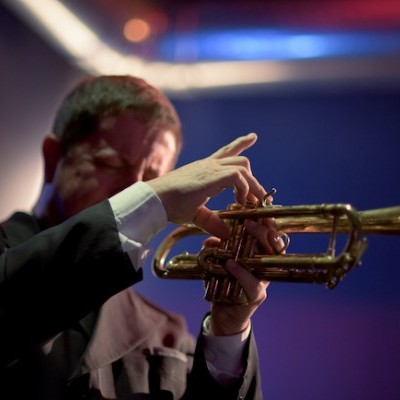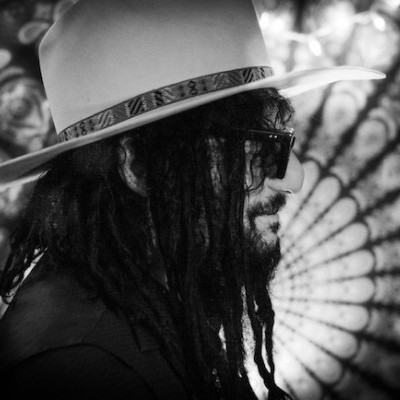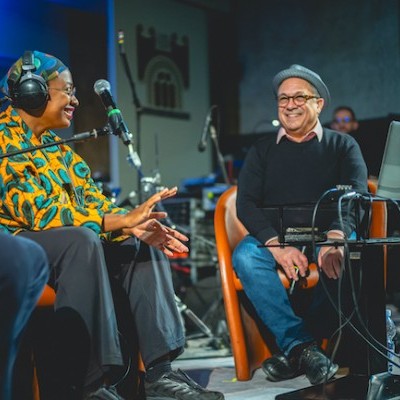Jul 9, 2024 11:35 AM
Trumpeter, Educator Jim Rotondi Dies at 61
Jim Rotondi, a renowned hard-bop trumpeter, composer and educator, died suddenly on July 7 at a hospital in France. He…

Hiromi’s diverse discography includes collaborations with pianist Chick Corea and harpist Edmar Castaneda.
(Photo: Makoto Hirose)“Kaleidoscope,” the opening track on Hiromi Uehara’s new solo album, Spectrum, features the dazzling displays of pianism that have become her trademark: cascading waves of right-hand notes; countervailing left-hand runs that pull, like rip currents, against the sonic flow; melodic figures that appear, disappear and reappear in mutated form amid the roiling sea of sound. The spectacle astounds.
But beyond the spectacle—and beneath the keyboard—lies the source of a telling twist: the piano’s sostenuto pedal. An oft-ignored appendage that sustains selected tones, the pedal, under Hiromi’s foot, transforms the most unassuming phrases in “Kaleidoscope” into pulsating facsimiles of digital delay. The strategy—and it is decidedly that—is both aesthetically striking and designed to heighten the piano’s appeal to 21st-century ears.
“I love the instrument and I want people to know its potential,” she said.
Few pianists exploit the potential of their instruments with the range of skill and emotion that Hiromi has at her disposal. Even at her most effulgent, she is the most intimate of pianists—an effortlessly charismatic communicator who, through her music, evangelizes for the instrument. And, in making that case, few documents testify more powerfully than Spectrum (Telarc).
Recorded in February 2018 when she was 39 years old, the new nine-track collection is the second in a series of solo albums she’s set to release marking 10-year increments in her life. At 29, she recorded Place To Be (Telarc), her first solo album. She plans to record the third album in the solo series when she is 49.
That Hiromi observes these milestones with solo albums is no coincidence. While her involvement with other formats is no less formidable—her duo and trio work in particular have electrified audiences—solo performance, by her own account, holds both a fascination for her intellect and a mirror to her musical soul.
“The more I play solo, the more challenging it gets,” she said. “It’s like a never-ending adventure for me. I just want to be alone with the piano, looking at myself as a pianist.”
The solo work has won the admiration of impresarios like George Wein, founder of the Newport Jazz Festival. “When she’s playing solo, nothing gets in her way,” said Wein, who has since 2006 booked her at the festival five times, in both solo and trio formats, and, along with fellow pianists Jacky Terrasson and the late Cedar Walton, in a series of solo “summit” concerts in 2011. “Playing solo, you get the most out of Hiromi.”
The summit concerts were scheduled at a time when Hiromi was emerging as a notable solo voice. Place To Be, a two-disc set released in 2009, had been garnering raves for the scope and execution of its offerings, from the relentlessly lyrical title track (a duo version of which had appeared in 2008 on a Concord release with Chick Corea, Duet: Chick & Hiromi) to the three-part “Viva! Vegas” (a mini-suite that is, well, kaleidoscopic in its evocation of Sin City).
Despite the praise, the success of Place To Be was by no means preordained. Hiromi’s five previous albums, all combo works, had not necessarily prepared her for the solo effort. “There was a lot of work with other people, and she wasn’t completely exposed,” said Michael Bishop, who has produced or engineered nearly all of her albums for the past decade through his Five/Four Productions. “She was more apprehensive about how a solo piano recording was going to be accepted in the world.”
The recording session, in fact, took some time to find its footing. “For me as the engineer,” Bishop said, “it seemed like the project overall was more work because it wasn’t her familiar element.” But, he said, things began to fall into place during an evening session when, as the night grew late and the studio lights were dimmed, she dug into the title tune. “She created such an incredible moment.”
Recalling the moment, Hiromi grew animated as she discussed how, when the atmosphere in the studio changed, so too did her relationship to her instrument: “It made me feel more focused. It made me feel as though it’s me and the piano. I could really feel every sound of the piano, the overtones, all these [sonic] details.”
A decade later, that feeling returned with added potency at the recording session for Spectrum. “There was a lot more confidence,” Bishop recalled. “It was just off and running. It didn’t ramp up like Place To Be did. She just ripped right into it. Within 10 minutes of doing our sound check, she was doing the first takes of ‘Rhapsody In Blue.’ We were recording ‘keeper’ takes within the first half hour.”
The intention on the first day was simply to run a sound check. But the plush surroundings in Skywalker Sound, the studio at filmmaker George Lucas’ Marin County ranch, induced in Hiromi a kind of adrenaline rush and, in two extended takes, she produced the material that became “Rhapsody In Various Shades Of Blue.”

Jim Rotondi was acclaimed for his wide, round trumpet tone, remarkable virtuosity and assured swing.
Jul 9, 2024 11:35 AM
Jim Rotondi, a renowned hard-bop trumpeter, composer and educator, died suddenly on July 7 at a hospital in France. He…

Charles Lloyd, seen here at the 2024 New Orleans Jazz & Heritage Festival, makes DownBeat Poll history!
Jul 11, 2024 12:23 PM
The incomparable Charles Lloyd swept the 72nd Annual DownBeat Critics Poll, becoming the first artist ever to earn…

“Being president of Blue Note has been one of the coolest things that ever happened to me,” Was said. “It’s a gas to serve as one of the caretakers of that legacy.”
Jun 4, 2024 12:21 PM
Sitting with Don Was is a comfortable and unhurried exercise. He may seem slightly reserved at first, but ideas and…

“She reminds me of my childhood and makes we want to cry,” Cécile McLorin Salvant, pictured here with writer Ashley Kahn, said of Dianne Reeves.
Jun 11, 2024 12:31 PM
Italy’s Umbria Jazz Winter is one of those rare annual festivals that not only coincides with a major holiday —…

Maria Schneider said of Decades, her new compilation release: “I just wanted to create something, put it in a beautiful box and say, ‘Look at what we did.‘”
Jun 18, 2024 12:00 PM
Maria Schneider opened the sleek black box and placed it on a coffee table in her Manhattan apartment. Inside lay the…